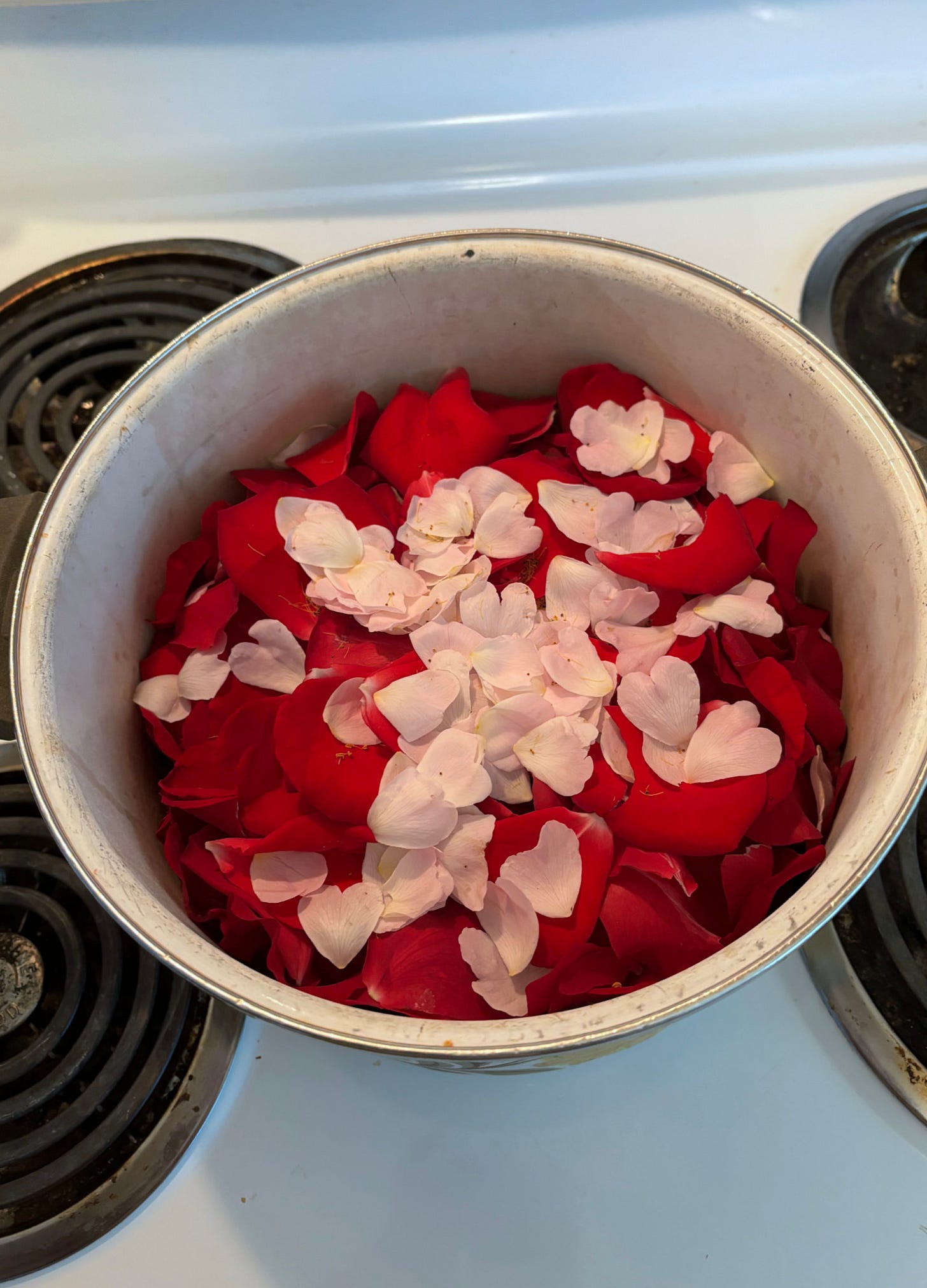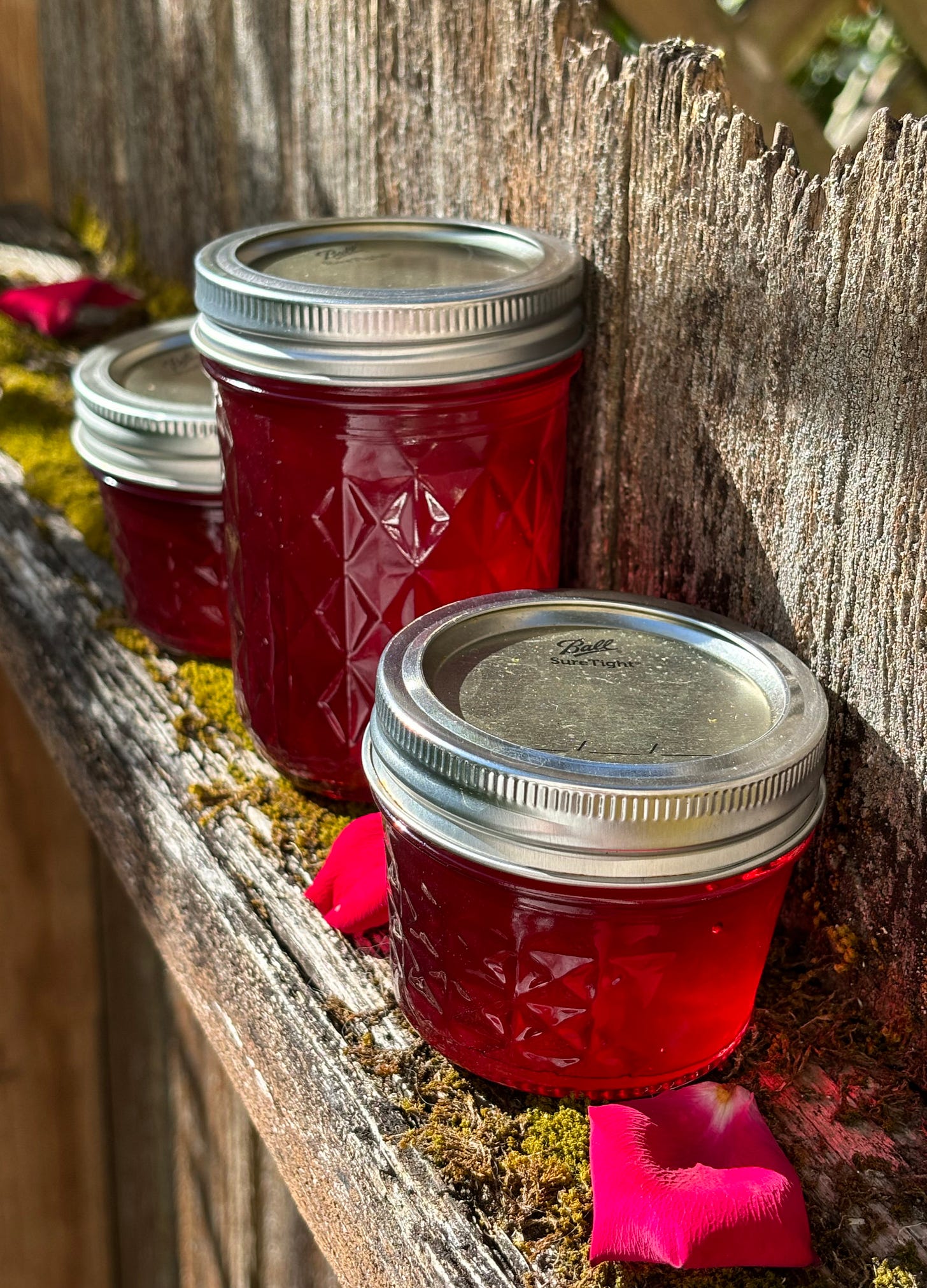Pacific Northwest springs can be slow, cold, and dreary, but eventually we get something approximating nice weather, and this year was no exception. The roses are in full bloom, filling the air with their heady scent, thorns at the ready to attack the unwary.
My garden boasts quite a few rose bushes, and not all of them are the rootstock that’s left over after the hybrid rose has died. My backyard is nearly impenetrable because we planted Darlow’s Enigma against the back fence — a bush so huge it can be seen from satellites — and someone (not me) thought it would be a good idea to train Paul’s Himalayan Musk up into the oak tree. I’m pretty sure it’s grown about forty feet up in there, in a duel to the death with the English Ivy that is so invasive in these parts. Another rose, a Northwest native known as a swamp rose, showed up uninvited and is heading, unmolested, toward the potato patch. I’m thinking of getting a machete.
But before I try to hack out a path to what’s left of the lawn, I thought that right about now would be a good time to make up a batch of rose petal jelly. Rose jellies are lovely, many with a slight honey flavor and they are fairly easy to make. A pot full of flowers, a little lemon juice, pectin and sugar and you are good to go.
A few caveats: always make sure your blooms have not been sprayed with any pesticide or herbicide (don’t buy your flowers at a florist). Do not branch out into other species of flowers without checking to make sure they are edible, first. There will be bugs. These are delicate jellies which have a shelf life of around three months. And I should probably point out that rose petal jelly has absolutely no nutritional value whatsoever. It just tastes good.
The day before you want to cook your jelly, go out and pick your roses. I fill a four quart pot three quarters full (around 12 cups) with the petals and stamens of the roses, all types and colors. I have some fragrant David Austin roses and some hybrid tea roses and the aforesaid species rose, rootstock rose; any type of rose will do. My rose jelly tends to be red as I throw in quite a few red petals. Do not add any of the green stuff; no leaves or stems need apply.
Once you have a pot of roses, fill it with two quarts (8 cups) of water. Simmer for 15 minutes, then let sit overnight.
The next day, strain the rose liquid through a cheesecloth and measure. The proportions are one cup of sugar to one cup of liquid. Always sterilize your jelly jars for 10 minutes in boiling water.
Rose Jelly:
3 1/2 cups rose infused liquid
1/3 cup lemon juice
1 1/2 Tbs pectin
1/4 tsp butter or oil
3 1/2 cups sugar
Mix the first four ingredients in a pot and bring to a rolling boil. Add sugar. Bring back to a rolling boil. Boil hard for at least 1 minute or until the jell state is reached (221 degrees F on a candy thermometer). Take off heat. Skim foam. Pour into sterilized jars leaving 1/4 inch headspace. Screw on lids and caps and process in a boiling water bath for 5 minutes.
Enjoy!







